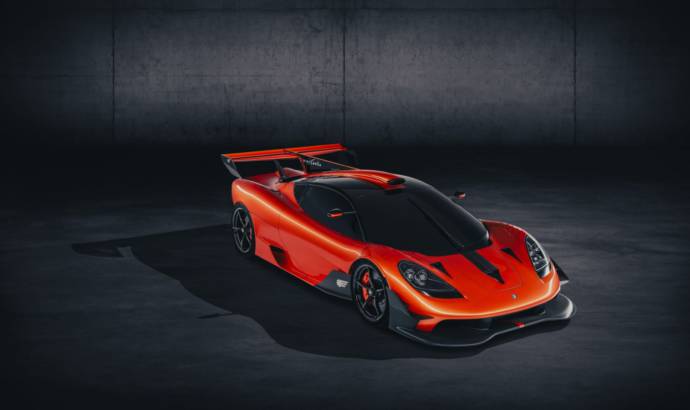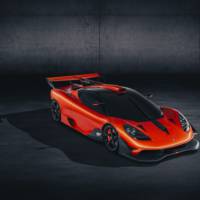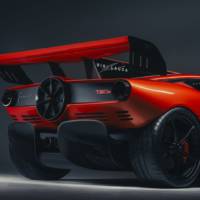Gordon Murray is honouring one of the most important pilots in the history of Formula 1. Its company revealed the T.50s Niki Lauda track-focused supercar for the first time. Developed in parallel with the T.50, the most driver-centric supercar ever built, the T.50s Niki Lauda has been conceived, designed and engineered to offer the ultimate on-track driving experience.
Like the T.50, the T.50s Niki Lauda has been designed and engineered without compromise, but with an even more extreme specification. It weighs just 852kg and will be powered by a substantially redesigned version of the T.50’s Cosworth-engineered 3.9-litre V12, producing 725bhp, revving to 12,100rpm and going through a newly-designed Xtrac six-speed paddle-shift gearbox. Advanced aerodynamics, aided by a 400mm rear-mounted fan, will produce up to 1500kg of downforce for optimum track performance.
Just 25 T.50s Niki Laudas will be made, costing £3.1m (before taxes). Production will start in January 2023 at Gordon Murray Automotive’s manufacturing centre in Dunsfold, Surrey, UK, after the run of 100 T.50 supercars is completed.
The dramatic aerodynamic features of the T.50s Niki Lauda instantly give away its performance potential. A striking central fin designed to enhance stability features a Niki Lauda logo. At the rear, the distinctive 400mm fan from the T.50 is retained, accompanied by an even larger rear diffuser and a new delta wing. The rear grille features a T.50s badge and ‘Fan Car’ script.
The aerodynamic elements continue at the front of the car. Barge boards are sculpted to improve airflow to the side ducts, which house the oil cooling systems for the engine and transmission. A splitter and dive planes are also prominent and further reflect the car’s aero-influenced design. At the same time, the purity of the T.50 is not lost, creating a purposeful yet elegant look.
Owners will be able to individualise their T.50s Niki Lauda through their choice of colours and liveries, so that no two cars will be alike.
The Cosworth-designed 3.9-litre V12 engine is a dramatically different version of the engine that powers the T.50. It is even more powerful and faster-revving too, delivering 711PS at 11,500rpm, on its way to a 12,100rpm rev-limit. At 178hp/litre, the specific power output of the T.50s Niki Lauda’s V12 exceeds that of the all-conquering Cosworth DFV Formula One engine. The power-to-weight ratio of 835PS/tonne betters that of a naturally aspirated LMP1 car.
The T.50s Niki Lauda’s engine is fed by a newly-designed, roof-mounted, high-performance RAM induction airbox (which can increase maximum power to 725bhp). The maximum torque figure is 485Nm, produced at 9,000rpm. A newly-developed, bespoke, straight-through exhaust system also takes the engine sound to a new level. Right through the rev-range it promises to be one of the greatest and most characterful sounding cars ever made.
The state-of-the-art V12 pushes the boundaries of engine design even further, with many new components. Changes include completely revised cylinder heads and camshafts, plus a higher compression ratio of 15:1.
Ratios have been chosen to optimise on-track performance and driver enjoyment and engagement, delivering a top speed of approximately 200-210mph. A set of closer ratios optimised for shorter circuits will also be offered, allowing owners to make the most of all six gears via the steering column-mounted paddles. In this configuration, the T.50s Niki Lauda will reach around 170mph flat-out.
The T.50s Niki Lauda is built around a specially developed, lightweight carbon fibre monocoque. Optimised for weight reduction and structural rigidity, it is constructed using advanced part-binding technology, with carbon fibre wrapped around a honeycomb aluminium core.
This stiffness and strength also contributes to the T.50s’s exceptional occupant safety , with precisely engineered deformable areas. Passengers are further protected by an F1-style ‘passenger safety cell’.
The Brembo carbon ceramic discs of the T.50 are carried over to the T.50s Niki Lauda (370mm x 34mm front/340mm x 34mm rear), with six-piston front callipers and four-piston rear callipers. The braking system and aerodynamics combine to produce incredible deceleration of 3.5g. To ensure the brakes maintain their phenomenal performance throughout a track session, new ducting around each wheel is designed to improve brake cooling.







